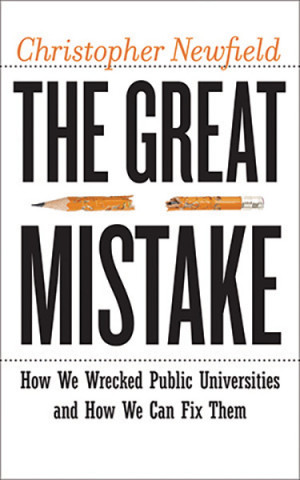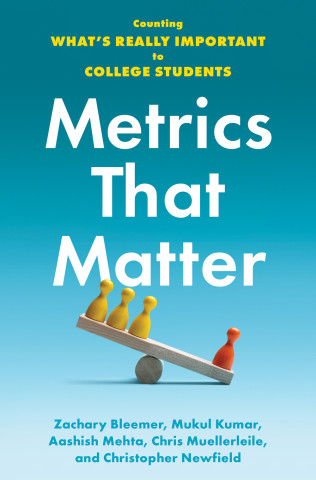The biggest mainstream media higher ed story last week--and this--has been the lawsuit charging Harvard with discrimination against Asian American applicants. My piece on it has been delayed by my study of the documents, which has changed my mind from pro to con on Harvard admissions. We may be seeing the end of the Powell Era's frustrating but functional compromise on race in college admissions, in part thanks to the Harvard practices that created it. More on that soon. Meanwhile, the other big higher ed story last week was confirmation of the shockingly un-Harvard conditions in the rest of higher education.
The American Association of University Professors
(AAUP) released some data snapshots last week, reporting (again) that 73 percent of instructional positions are non-tenure track (NTT). In spite of the hundred or hundreds of applicants per tenure track job, academic work isn't a
great thing for most of the people doing it. By that I mean that college teaching is mostly precarious and is a proverbial middle class job only for a minority.
State legislatures and others regularly lament the inefficiencies of tenure, but it is mostly gone: fewer than 20 percent of post-secondary instructors actually have
it. The public image of the privileged "college professor" lags decades behind the common reality.
The employment structure also changes the nature of universities. Neither academic freedom nor faculty governance can have much
general impact when only a quarter to a fifth of "the faculty" are in a
position to exercise them.
This pie chart for the best case scenario-- Research 1 universities--is startling.
What
most people think of as professors are only 30 percent of teaching
staff. About the same share are grad students. These proportions don't
say "only PhDs can teach university students." Nor do they say
"university professors must be engaged in their own research." And these
numbers
are for the most research-oriented universities.
At
the same time, R1s offer multi-year contracts to a much higher
percentage of their NTT faculty than do non-doctoral institutions
(2/3rds at R1s, half at R2). (See Colleen Flaherty's Inside Higher Ed overview for this and related points). And
yet even these NTT faculty teach 2-3 times more courses per year than TT
faculty and are paid less: one UC official recently praised their
"teaching power," meaning the cost-benefit advantages of their high
teaching loads.
Continued austerity means that public
university administrators no longer imagine replacing NTT with TT faculty, who have
research and governance obligations, and whose lower teaching loads give them more time to do
intensive, personalized teaching. These are the university's three core
public goods--creating knowledge, spreading knowledge, and governing
knowledge in the general interest. Keeping most faculty contingent diminishes all of these.
College teaching
is also frequently hunger work. Postsecondary teaching conditions are
often unethical, exploitative, and cruel. See, for one of many recent example, the excellent "Going Hungry at the Most Prestigious MFA in America" (h/t Audrey Watters).
More public-good damage: look at the teaching conditions in community colleges.
2/3rds of community college instructors work part time. It
doesn't matter how brilliant or dedicated they are: teaching
loads in CCs are 5 courses per term, and for part-timers five generally
don't add up to a living wage in any one place. A typical CC student
will have 2 of 3 courses taught by a part-timer, and only 1 in 8 taught
by a tenured professor.
Again, the instructors can be
superbly skilled and dedicated and yet lack the working conditions to
deliver. CCs have the worst completion rates in the nation, which is partly tied to a mostly non-permanent teaching force that doesn't know
each student well enough to give them personalized attention.
In their
general indifference to teaching and learning quality, policymakers love
CCs, ostensibly for linking their minority-majority student bodies
directly to middle-skill jobs. But CCs aren't working well, and their temp
teaching staffs and excessive teaching lords are two major
reasons why. (I say this in full awareness of two generations of transfers to UCSB telling me about beloved instructors at their CC: great people teach great classes there, just not at scale.) I know of no state legislature that is worried about instructor working conditions at CCs, and the reason is that politicians really like CCs because they're cheap.
The obvious danger is this: if the majority experience of college converges
with their experience of high school, the public will pay less, not more--as
will the students themselves. Politics, ethics, and knowledge aside,
quality upgrades are the only business answer. It is not to be found in these
employment charts.
While everyone (or at least readers of the New York Times and WeChat) obsess about Harvard admissions, it's worth remembering that 38 percent
of Asian American and Pacific Islander students are in community colleges (Figure 19.6). That is almost exactly the same proportion as Black students (39 percent). CC's house 49 percent of Latinx students, 35 percent of white
students, and 45 percent of Native American/Alaskan Native students. Public colleges and universities teach 76 percent of all students and 81 percent of Asian Americans. The well-being of public college instructors is far more important to national life than anything that happens at Harvard.
Transfers
7 hours ago







2 comments:
Some great points here, but could you clarify what you mean by this: "And yet even these NTT faculty teach 2-3 times more courses per year than TT faculty and are paid less." Do you think that someone who does not have a terminal degree, does not do research, and may not have even been hired through a nationally competitive search should make the same salary that you, a tenured professor who got your job once you proved to be nationally competitive as both a teacher and a researcher? Your statement made it seem as though the sheer number of courses a person teaches ought to determine their salary, even if the person teaching fewer courses has other responsibilities such as research/creative activities and service to university and the profession.
beautifully described thank you for sharing
Join the Conversation
Note: Firefox is occasionally incompatible with our comments section. We apologize for the inconvenience.